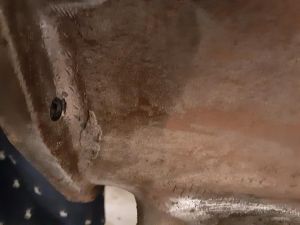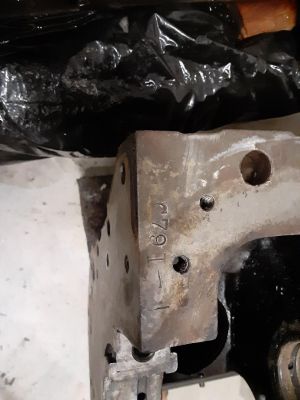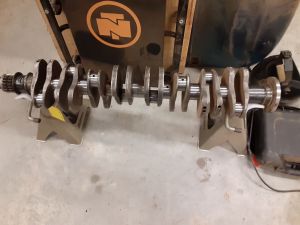- Home
- About Us
- Join/Renew
- Member Benefits
- Member Pages
- Log In
- Help
- Museum Store
I started the rebuilding process on the 836. I opted to hand Clean the block using oven cleaner, carb cleaner and lacquer thinner.
I removed all the gallery plugs and ran into 3 curious things.
First is a casting flaw. There were several and the black paint had run curtains in it.

Next are the 2 stampings at the front and rear passenger’s side on the oil pan mounting flange. C791-1. I am clueless unless it is a code for the builder or something like that.

Had the crank polished and has it checked for size. All are within .001 of each other. Sent the rods out to be rebabbited.

What’s the feeling of Babbitt versus installing inserts? When I was at White Post Restoration, most Babbitt rods were sent to a place in California to be converted to insert…
I do a lot of touring with our PA’s.Both my 1936 1601 8 and the 1933 1247 12 were rebuilt with insert rad bearings. The machining needed was very simple and inexpensive, only a few $ more per rod than babbit. Less than $100 on the 8 as I recall. That was done about 2007.
Unfortunately both of the engine builders are no longer with us, but I think the 8 inserts were from an Oldsmobile V-8 application.
Dave
The engine on my ’36 was rebuilt twice. The first time with Babbitt bearings. The Babbitt was poured by a man in New York who has been doing it for years. After rod knock developed, and when the rod cap was removed, bearings were in pieces held in only by the pressure against the crank. One of two things were happening. either the art is lost, or Babbitt isn’t made the way it use to be. Insert bearings on the last overhaul (John Cislak) have been totally troublefree. There certainly was
good reason that manufacturers switched from poured bearings to inserts.
Thanks guys for the input. I have another engine and may try the insets on that one. I would be interested in what had to be done, machining wise and which bearing would work.
One issue with Babbitt is when you go undersize on the crank, the Babbitt gets thicker. Babbitt doesn’t transmit heat well, so the thicker Babbitt tends to get hotter and start to come apart. Or, at least that’s what I’ve been told over the years.
I have inserts on two straight eights, my ’31 Pierce and a ’38 Super Eight other P car, and am very happy with them. On the ’31, the rods were built up slightly on the sides to compensate for no side Babbitt, if that makes sense. On the Packard, we just brazed three spots on each side of rod and made a jig to machine to size needed, and that’s what replaces side Babbitt. There’s virtually no side thrust on the bottom end of a rod, so all that’s needed is a spacer to replace the side Babbitt.
David,
Fortunately my crank is standard, so I hope I have no issues.
I plan to do some experimenting on the second engine.
Do you know what type of inserts they used in the real P car, the ’31
